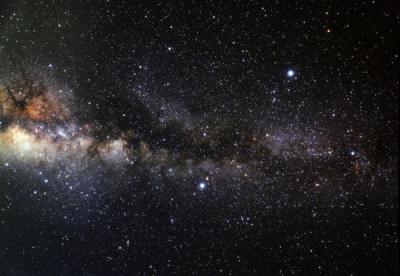Only a small part of the stars filling the Universe is accessible to the naked eye. However, they are enough to appreciate the greatness of the cosmos. In the list of the most prominent luminaries in the twelfth place is Altair - a star often occupying the minds of astronomers.
Location
Finding a star is simple enough, not only because of its brightness. The Altair star is located in the constellation Oryol, which occupies an impressive stretch of the sky and is generally well visible. The name of the star clearly indicates its affiliation. It is formed from "al-nasr al-tair", which is translated from Arabic as "flying eagle."
The ideal time for observing the heavenly pattern is from June to August. The eagle belongs to the equatorial constellations, and therefore is better visible in the central and southern regions of our country, although it is also available for study in the northern regions. This heavenly drawing lies southwest of the Swan. It is easy to recognize Eagle by three stars making up an almost perfect straight line. These are Altair, Tarazed and Alshain. Astronomers also combine them into the asterism of the balance beam.
Hero of the legend
Altair is a star that goes into more than one asterism. The most famous combination of luminaries with his participation is the Summer Triangle. Altair’s “Companions” in it are Vega (the constellation Lyra) and Deneb (the constellation Cygnus). All the luminaries that make up asterism are clearly visible. Since ancient times, they have been participants in various legends. In one of them, Altair appears as a shepherd, who once a year, on the night of Ivan Kupala, meets his beloved Vega, a weaver.
Parameters
It is easy to guess that in the heavenly drawing of the Eagle, the brightest star is Altair (alpha constellation). This star of spectral class A is not much ahead of the sun in size. The mass of Altair is 1.7 times larger than its analogous parameter; the diameters of two celestial bodies are approximately in the same ratio . The brightness of Alpha Eagle is largely the result of its relatively close proximity to Earth. Altair from the Sun is approximately 16.8 light years distant. In addition, alpha Eagle is brighter than our star. The luminosity of Altair is nine times higher than solar.
Fast
Altair is a star known not only for its brightness and visibility. It is characterized by a very fast rotation around its axis. A star makes one revolution in a period of 6 to 10 hours ( information differs slightly in different sources ). It is possible to appreciate such a speed if we recall that the Sun needs much more time for this - 25 days.
Such speed has its consequences. Altair is an elliptical star. The rapid rotation led to the compression of the star in the region of the poles. As a result, the diameter of the star at the equator is 22% larger than the polar one. Initially, the flattened form of Altair was discovered in the process of theoretical calculations, but in 2007, scientists received evidence of the correctness of these constructions.
Difficulties
Specialists at the Center for High Resolution Astronomy at the University of Georgia, led by John Monnier, chose Altair as the object of study. It was supposed to take a picture of the surface of the star. A formed image would be the first to show so close a star outside the solar system. However, to obtain such photographs of a star the size of Altair, located at the same distance, you need a telescope with a mirror three hundred meters in diameter. For the modern level of technology development, such equipment is a matter of the future.
The obvious problem did not stop scientists. Four telescopes arranged in a circle with a diameter of 250 m were used for work. The light caught by them was collected in a device called the Michigan Infrared Combiner. As a result, a high-precision image of the star was obtained.
Study Summary
The Altair star, whose photo was taken with a resolution of less than one angular millisecond, appeared as predicted by theory - flattened in the region of the poles. However, this is not what interested scientists most of all. The images showed different brightness sections of the star’s surface. Separate spots were observed, dark and light. In addition, differences in the brightness of the star's photosphere in latitude are observed.
The discovered features of Altair have not yet been explained. They do not fit into the framework of accepted concepts of uniformly rotating stars. The data obtained require further detailed study using new equipment and special technologies. Optical interferometry methods can be used to study the surface and other stars close to us.

The star Altair in astrology is connected, among other things, with the ability to predict, the tendency in mind to get ahead of the era. Perhaps it is no coincidence that it is this luminary that prompts scientists to improve their equipment. The inaccessibility of acquiring new knowledge about Altair by old research methods, the inexplicability of some phenomena within the framework of traditional theories - all this stimulates the movement of scientific thought and available technologies to progress. Alpha Orla, as well as the entire constellation, is still of interest to amateur astronomers. Fairly close location and brightness, combined with insufficient study - these are the reasons for such close attention to Altair. Probably, soon scientists will please us with new discoveries related to this star.